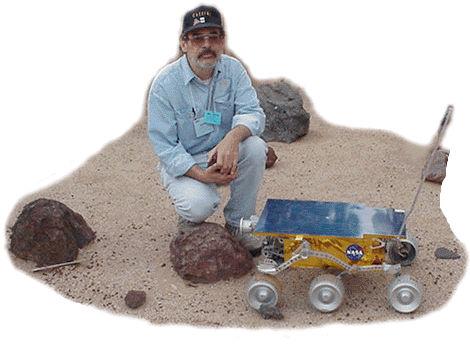





Thursday's Classroom

| Volume 7 Issue 01 | January 2001 | |
| What's Up? -- January 2001 | ||
Welcome to the third
millennium, the new century, and the new year. Wow! How often does this happen?!?!?!
So... before we get started in this new millennium/century/year let's take a look
back at the last time this happened. Especially a look at the sky.

Possibly the most noticeable thing, (at least from a northern hemisphere perspective), would be that the north star as we know it today was not the same star 1 000 years ago. The position in the sky where either of the Earth's two poles points toward is referred to as the celestial pole. At the beginning of the third millennium, based on the Earth's north pole, there is a star very near to the north celestial pole. This star we refer to as Polaris, the North Star (actually Polaris means pole star). However at the beginning of the second millennium there was not a star near the north celestial pole. There was no north star then. This change is due to a very slow motion (approximately 26 000 years) of the Earth, a spinning motion often described as the wobbling motion a spinning top has as it slows down. This motion, known as precession, causes very subtle changes in the relative position of the Earth's surface with respect to the stars. These changes, over time, become quite noticeable. The most noticeable has to be the change in distance separating the celestial pole from the North Star. Currently they are about 50' (minutes) of arc apart - (1 degree equals 60 minutes; one minute equals 60" (seconds) -- the full moon has an average apparent diameter of 30"). As precession continues to happen the celestial pole moves toward the North Star at the rate of about 17" each year. The closest they come is about 25" in 2105. However another change that has happened since the last new millennium has been, if nothing else, ammunition for illustrating a difference between Astronomy and Astrology. Simply put, in Astrology, for example, the sun is referred to with respect to the constellation that it is 'in' using celestial reference points based on the sky some 3 000 years ago. Astrologically I am a Taurus with a birth date in May, however Astronomically I am really an Aries. Due to precession the sun's position with respect to the constellations has shifted one constellation west - a circumstance any horoscope reader should take into consideration! You may have noticed that on the Sun Watch page, the sun's position is given both in terms of the Astronomical and Astrological positions. Astronomy has changed as the sky has changed, Astrology has not. |
 These Articles, activities, and the monthly newsletter may be reproduced for classroom use; inclusion in another newsletter,
or linked with another web site, without written permission. Any other use will require written permission.
These Articles, activities, and the monthly newsletter may be reproduced for classroom use; inclusion in another newsletter,
or linked with another web site, without written permission. Any other use will require written permission.